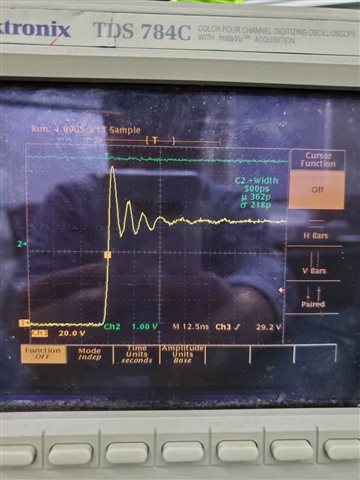HI,
I am currently debugging the demo board of LMG1205, please see page 5 of the attachment for the schematic diagram, LTM5113 uses LMG1205 instead. It is found that the output overshoot is very strong. When I try to increase the R19 to 10ohm, the LMG1205 is burned out. Is there any way to reduce the output overshoot? The picture is the waveform of the output terminal, at this time VIN is 80V.


